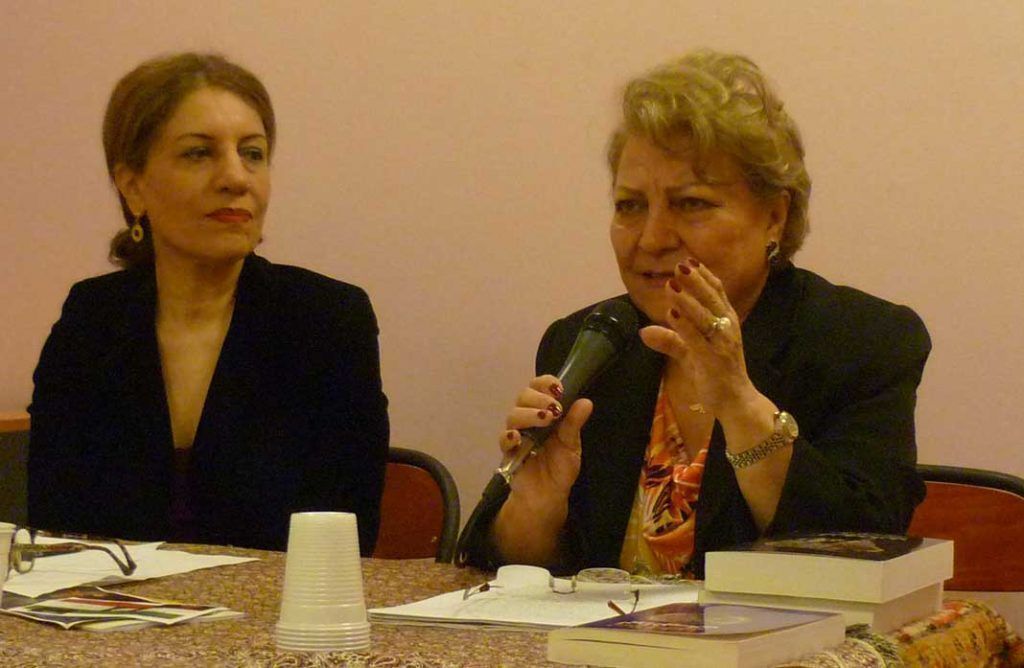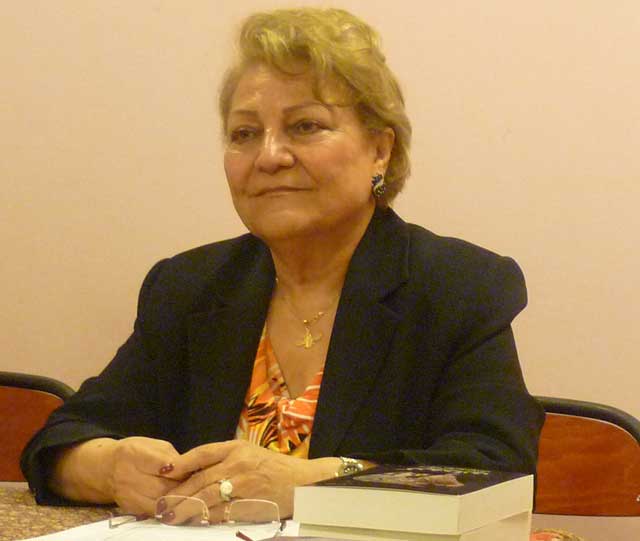December 11, 2016
By Katayoon Halajan
Giti Pourfazel is a lawyer, poet, writer, and researcher specialising in Iranian history and culture. She was born in Tehran to a family whose passion for Iranian culture and heritage shaped her interests and career aspirations. Pourfazel studied law at Tehran University, and received her license to practice in 1978. She briefly worked for the Iranian government before going to France to continue her studies. Pourfazel returned to Iran in 1979 amidst the turmoil that led to the Islamic revolution.
She was among 57 attorneys who were disbarred in 1983 by Mohammad Mohammadi Gilani, a revolutionary court judge, for criticising the Islamic law. In 1997, the board of directors of the Iranian Bar Association petitioned the judiciary to review the case file of lawyers whose licenses were unjustly revoked. Pourfazel and a number of other attorneys were reinstated and permitted to practice law again.

Pourfazel has defended political prisoners and members of the Baha’i faith for years. She also advocates for women’s rights in her writings and public speeches. She resigned from the Iranian Bar Association in March 2014 and returned to research work on Iranian history and culture.
Pourfazel was a guest speaker at a gathering entitled “ Status of Women among Semitic Religions” held on November 25, 2016 in Paris to mark the international day for the elimination of violence against women. She opened her talk by asserting: “Women have been oppressed since ancient times, this is an irrefutable historical fact. The world has been shaped by Torah’s narrative which is central to Judaism, Christianity, and Islam. Islamic laws are based on Torah’s instructions.”

In her view, the story of creation in the book of Genesis in which Eve is created from the rib of Adam, marks the beginning of the degradation of women. She said: “ In the natural world it is the woman who gives birth not a man.” Pourfazel challenged the traditional portrayal of Eve as a weak-minded female whose impulsive behaviour brought about the expulsion of the couple from paradise. “What is important about this story is Eve’s curiosity and initiative which demonstrate her intelligence. These stories were clearly meant to demean women.” Pourfazel said that men have subjugated women throughout history, but it is equally true that women exert a great deal of influence on men in every aspect of daily life. “It is a well known fact that it is the woman who manages the family and the household.”
Contrasting the semitic narrative of creation with that of the ancient Iranian religion, Pourfazel, said: “In Zoroastrian tradition men and women were created simultaneously, hence neither is superior to the other. Kayumars, the first human being, is neither a man nor a woman.” According to Pourfazel, social and cultural distinctions between male and female did not exist until the Sassanid Empire (224-651 AD). Men and women apparently wore identical clothes, jewelry, and even make up. “Men and women of Zoroastrian faith enjoyed equal rights and social status.”
Pourfazel explained in detail the significance of the most recognizable Zoroastrian symbol, Farvahar; an old man with two wings who holds a ring in one hand while with the other hand points to a spot in front. For the Zoroastrians, the gesture signifies a progressive force and the three rows of feathers on the wings denote the three fundamental doctrines of Zoroastrianism, namely Good Thoughts, Good Words and Good Deeds.
Pourfazel cited various examples throughout history that illustrate how women have been deliberately and systematically demeaned and degraded. According to her, the 11th century Iranian philosopher, Imam Mohammad Ghazzali, believed women were feebleminded. He divided women into ten distinct types, each corresponding to a particular animal; pig, orangutan, dog, snake, mule, scorpion, mouse, pigeon, fox, and sheep. A woman whose personality resembles that of a sheep brings good fortune because she is submissive and docile.”
Pourfazel said that in a collection of sermons attributed to Shia’s first Imam, Ali, entitled Nahj al-Balagha, the reader is advised “to do exactly the opposite of what a women may advise him to do”. She also highlighted comments by Sheikh Muhammad Abduh, a 19th century Egyptian jurist, who believed that “a woman’s sole purpose was to procreate and thus would need just enough intelligence to manage the affairs of a household.” She added that “this line of thought stems from Torah, Bible and Qoran.”

Pourfazel continued: “In contrast, however, in the pre-Islamic Iran, 23 February was celebrated as women’s day, and for an entire week men would do the housework and would bring gifts for their wives.” She said that although the Sassanid dynasty marked the decline of women’s status in the Iranian society, nevertheless, the Matigan-i Hazar Datistan which was the judicial code of the Sassanid empire stated: “if a girl is not married by the time she reaches puberty (15 at the time) and becomes pregnant out of wedlock, her child must be raised and cared for as other children in the family.”
“It has taken women in the West many years to secure those rights that were guaranteed to women in the Persian empire nearly 1,400 years ago!”, Pourfazel concluded.
[responsivevoice_button voice=”US English Female” buttontext=”Listen to this “]








